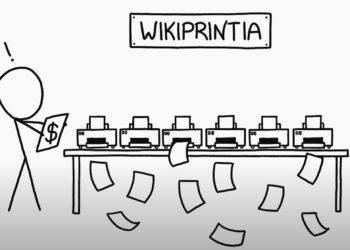
Image by that_james via Flickr
At the University of Oxford, I was yelled at for walking on the grass. Only dons are allowed to trespass on the green carpets that form the center of most cloistered colleges. After being thrown off the turf, I asked the docent why the quad was a privileged place. “Dunno” he replied. “Tradition, I guess.”
Tradition is a dangerous word. Like patriotism, it conveys a positive frame of reference that is hard to reject. Tradition becomes both the goal and the means to perpetuate itself. It is a serpent that consumes its own tail.
The latest report, Current Models of Digital Scholarly Communication, a joint endeavor by ARL and the non-profit research group Ithaka attempted to avoid falling into the circular argument about traditional scholarly resources. As Karla Hahn, Director of ARL’s Office of Scholarly Communication, begins the report:
[The] frame for interpreting changing practices of scholarly communication carries the risk of falling into a certain circularity of thought – we may acknowledge that scholarly works will change and yet behave as if anything that doesn’t look like a traditional work of scholarship is not a scholarly work; thus the immutability of traditional publishing models becomes axiomatic. Different becomes less by definition. (p.5)
Yet the researchers fall into the same trap of circular thinking they were attempting to avoid.
The report represents a collective effort of 301 librarians doing interviews with scholars in 46 institutions. I must acknowledge that this represents a major and significant effort to gather information from faculty. The purpose of the study was not to survey the landscape but rather to “highlight interesting and relevant examples of digital scholarly resources.”
Trained librarians interviewed faculty to uncover the kinds of online resources used in research. To qualify, a resource needed to be “online,” “original,” and “scholarly.” Online was defined as “born digital” and “scholarly” as containing material “by and for a scholarly audience.”
The serpent has seen its tail and opens its jaws.
A scholarly resource could not be a search engine like Google Scholar, since it does not contain its own original material but points to other sources, although they did count preprint servers like arXiv and SSRN. To me, the distinction between hosting and directing seems artificial; it does not matter for anyone other than a librarian where a digital resource physically resides. In addition, the team counted blogs, wikis, and user-contributed encyclopedias, which is curious, since it ignores Wikipedia, which last time I checked is a user-contributed encyclopedia that contains a lot of material contributed “by and for a scholarly audience.” Youtube was also nixed, even though I’ve watched several lectures by eminent scholars from this site.
All in all, the Ithaka team rejected more than a third of the resources (115 resources) submitted by trained librarians because it did not fit their definition of “original and scholarly.” By doing so, they could not escape the same circular argument that they fought so hard to avoid.
The serpent has devoured its own tail.
By imposing these definitions, the researchers artificially defined scholarship in traditional terms and therefore limited what could be considered innovative. It should not be surprising that the report is called Current Models of Digital Scholarly Communication, and not Innovative Models of Scholarly Communication.
Scholarship has always been a bottom-up process defined by a community of peers. Instead of pre-defining what scholarship is for the scholars, it would have been a better learning experience to have the faculty define what scholarship is for them.
By defining scholarship, we continue to perpetuate the notion of the Oxford quad and define who is free to step on the grass.
It is, after all, a tradition.
Discussion
3 Thoughts on "ARL/Ithaka Report on Scholarly Communication"
You say: “Instead of pre-defining what scholarship is for the scholars, it would have been a better learning experience to have the faculty define what scholarship is for them.”
This is what we have been doing for some time at the Center for Studies in Higher Education at UC Berkeley. With generous funding from the Mellon and Hewlett Foundations. And also generously cited by Ithaka and ARL.
See for example publications at:
The Future of Scholarly Communication
http://cshe.berkeley.edu/research/scholarlycommunication/index.htm
Digital Resource Study
http://cshe.berkeley.edu/research/digitalresourcestudy/index.htm
Best,
Diane
One could have defined a scholarly resource as simply those resources used by scholars. This would be a functional identity approach.
Another method would be to allow communities of scholars to define what scholarly resources mean to them. This would be a consensus-based approach.
But applying definitions at the outset and filtering the incoming data based on the opinions of the researchers seems to miss what the study attempted to address, which is to survey the innovative resources used in scholarship.
Considering the immense size of this study, in hindsight, this may be considered a missed opportunity.
![Reblog this post [with Zemanta]](http://img.zemanta.com/reblog_e.png?x-id=3c18bfb3-ea13-4c13-8e12-fbcbdc71f03b)


